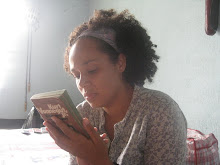I got my first glimpse in December. Sometimes at night I will hear drums, a distant beat that lets me know history is still living. Most of the time the drums are from the children at the church getting in a late night dance and drum session or from a marriage. One night, hearing the drums were close, I was asked by my neighbor if I had ever seen a Daba funeral. I immediately perked up as a photograph in my memory resurfaced. I was shown by one of the Grands in my village a picture of a Daba burial. A photo of a figure, human-like shaped, but much simpler and malleable. The figure reminded me of a life-sized rag doll made from someone’s entire wardrobe, tied up by its extremities by some gruel older brother at the torment of his younger sister. The rag doll, I was explained, was once a man, a very prominent and rich man of the Daba people and the clothes, his coffin.
I have begun to believe I am on a cusp. I have been placed in my village in a crucial period where a shift from the traditional to the modern can be felt in the fading frequency of funeral drums. I have seen many elders in village, mostly women, walking around with what I assume to be remnants of their culture; ropes tied around their half-naked bodies, wooden cylinders protruding from their bottom lips and their minimalist dancing style often brought out for fetes. I often ask what it all means. In response I have gotten little to help me understand the Daba; the responses from the women and their families are typically a variation of “It’s what the older people do” with no explanation close to why they do it?
I can’t say I came any closer to understanding this particular Daba practice even though I tried to ask as many questions as I could about the one Daba funeral I attended in December. Following the sound of the drums and flames of the bonfires, several neighbors escorted me to the 3 all day, all night vigil. I shy away from village gatherings as a rule because my skin seems to attract the attention away from those for whom it’s meant. I felt that the cover of darkness might allow me to fade into the crowd. I felt somewhat anonymous sitting in the large semi-circle of women and men watching the elderly women dance in their tight moving circle. The Daba dancing is a shuffle, a fast dragging of one stiff leg accompanied with a constant shrugging of shoulders that I am convinced done anywhere outside the context and confines of village life would look a lot like a cripple with a tic. Keeping watching over the night’s festivities, obscured by the mud hut on whose side she rested, was the former women, the rag doll. I could see rag doll legs and arms filling the darkness, stretching out towards the dancing women, but nothing more. My neighbors refused to approach her, what they called the ‘cadaver,’ out of fear. My curiosity wasn’t enough to break down the wall of anonymity that I enjoyed as a result of the darkness. I knew from questioning that I had three days in which to see her and each day she would become fatter and heavier under the weight of clothing.
Dabas are buried. Before they enter the earth they are wrapped or dressed in multiple layers of used clothing bought at local markets. These are the clothes that Cameroonians buy and that once graced the interiors of American and European closets and then were donated to charities under the assumption that they would be given to the people of other nations for free. Why do they wrap them in clothing? No one could tell me. On the end of the third day they are then buried, sometimes in a concrete slab if they are rich, or just in the dirt. They are to be buried with all their possessions. I was told to use a ‘cadavers’’ possessions is to invite haunting and bad luck. When asked whether the graves get robbed, the answer was yes, all the time. If your thinking this sounds a lot like Egyptian burials I would agree with you.
But now to the picture. Most of the time I am concerned that attending village fetes with my camera I will be crossing some line, invading the sacred and private with my foreign inquiries. It seems that when I worry like that it’s usually the Cameroonians who turn the events into a public spectacle. The next day I exited my house with the intention of capturing Daba life and sharing it digitally. I wanted to make sure people were consulted and asked permission before I went into photographer mode. Every inquiry was met with “of course” and “why are you asking.” As soon as the camera emerged from its case people were jumping in line to take a picture with the ‘cadaver.’ Children crowded around, nudged their way into the adult’s pictures and gave those famous unsmiling faces they like to give to all awaiting photographers. Then it was my turn. Not scared, but maybe slightly uncomfortable, I slowly lowered myself down onto the edge of the bed and assumed the non-smiling position. In the untrained hands of my neighbor my camera captured what is probably one of my most interesting pictures, which I now share with you…..enjoy!



No comments:
Post a Comment